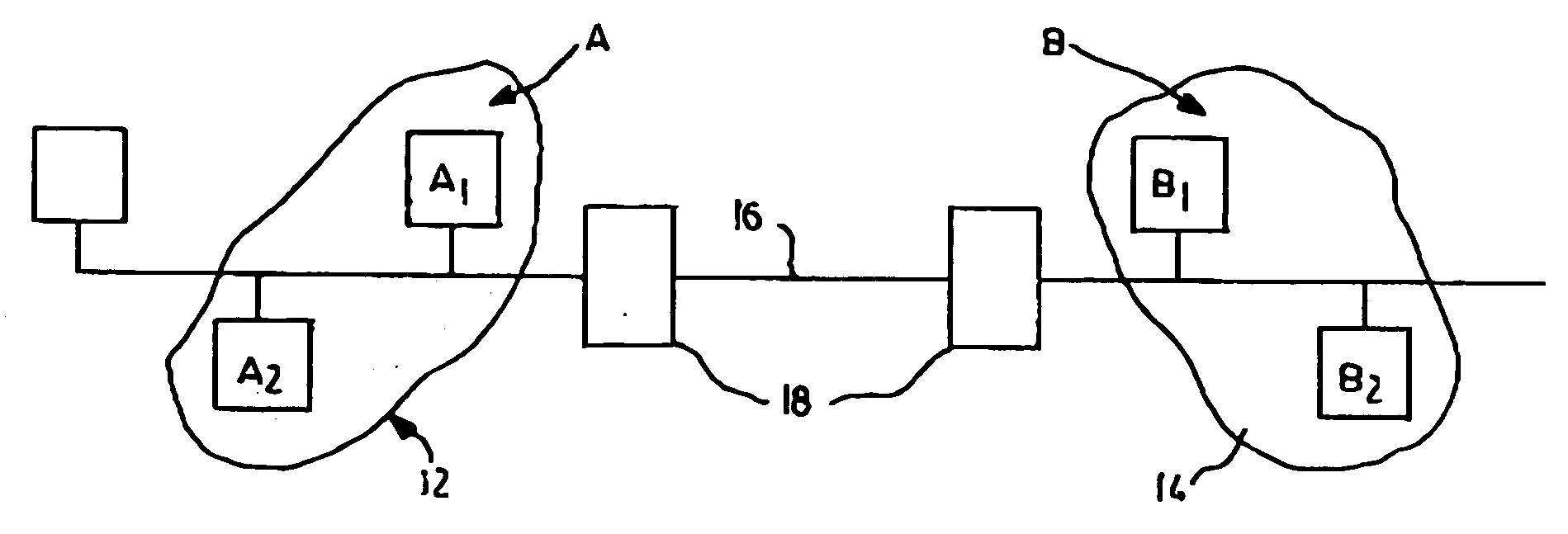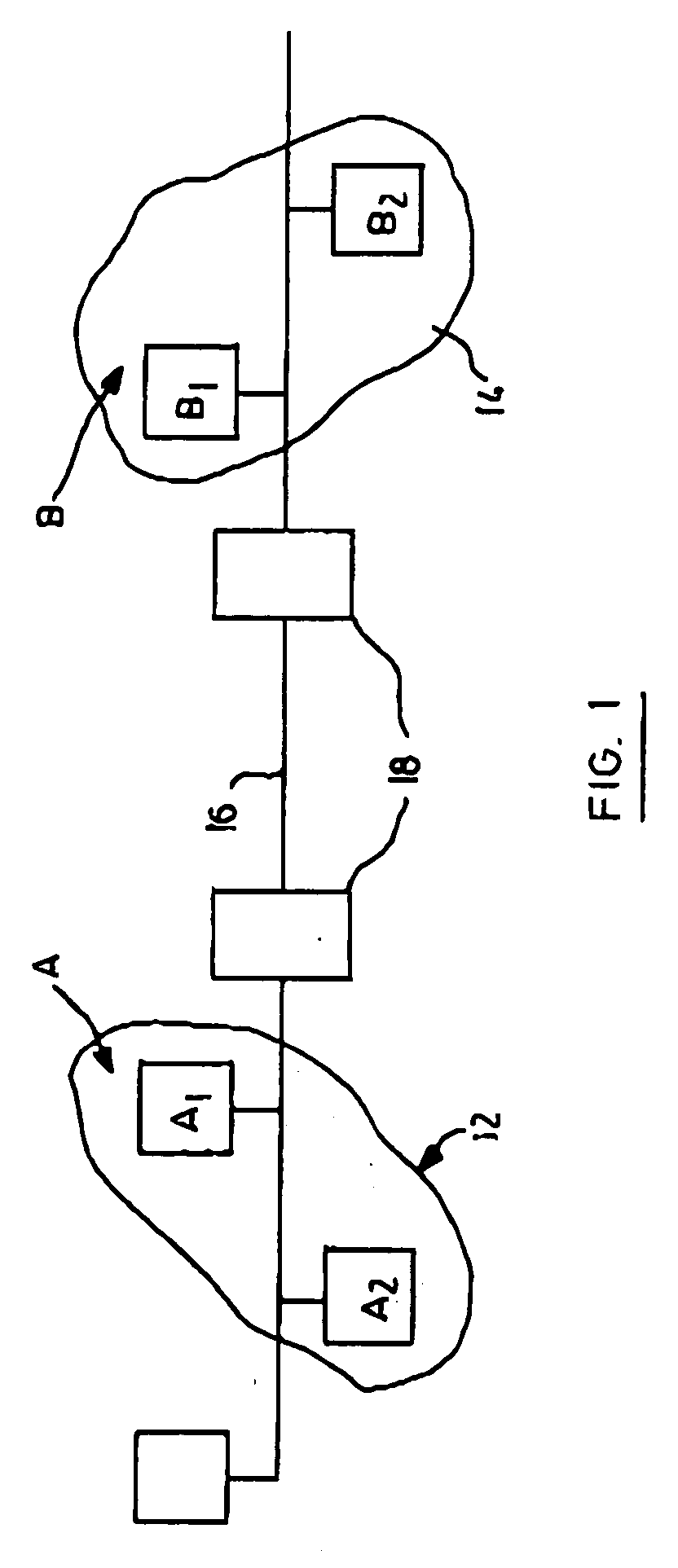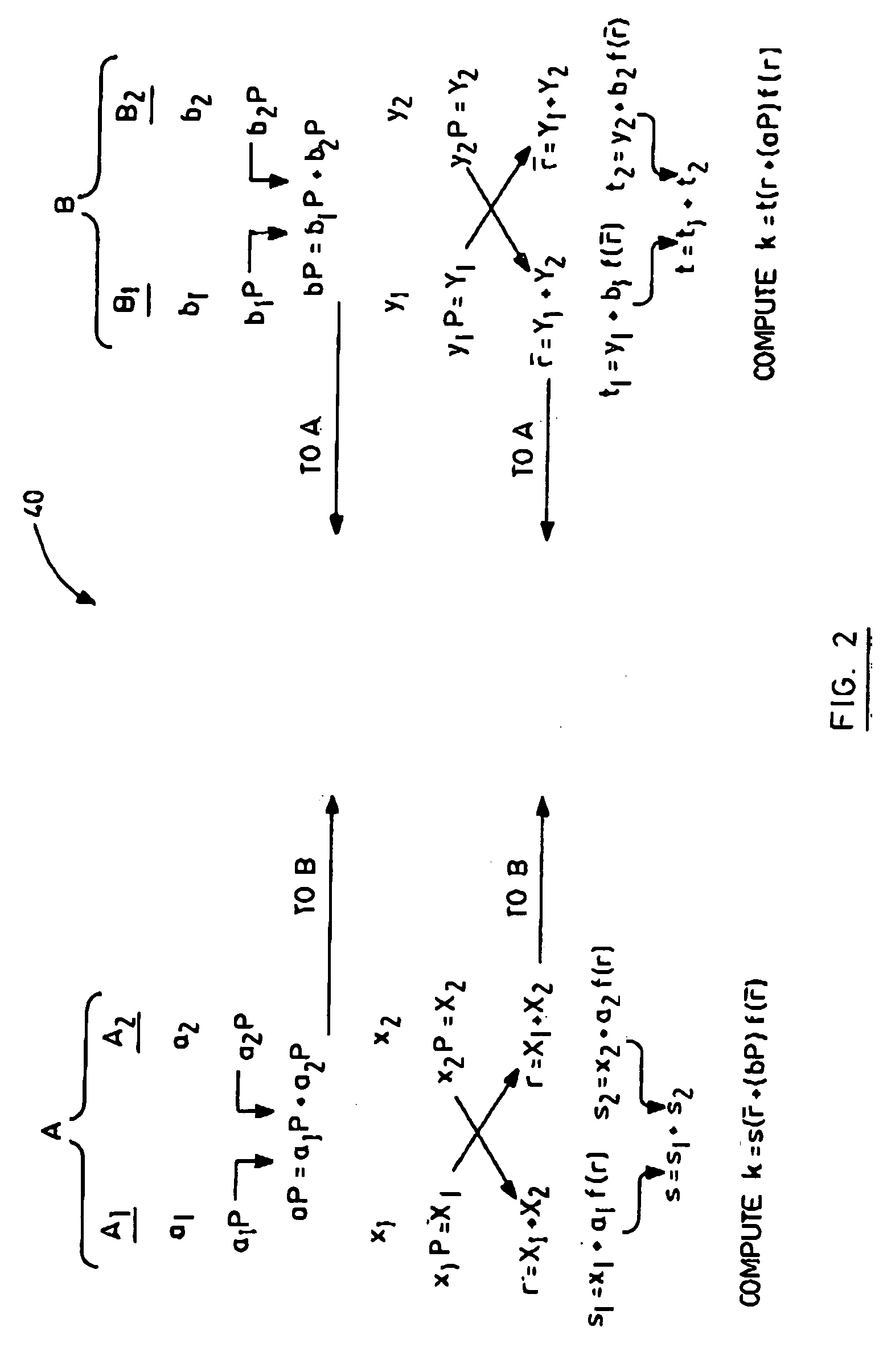Split-key key-agreement protocol
a key-agreement protocol and split-key technology, applied in the field of split-key key-agreement protocol, can solve problems such as difficulty in implementing the generalized mqv schem
- Summary
- Abstract
- Description
- Claims
- Application Information
AI Technical Summary
Benefits of technology
Problems solved by technology
Method used
Image
Examples
Embodiment Construction
[0022] Referring to FIG. 1, a schematic diagram of a communication system is shown generally by numeral 10. The system 10 includes a first entity A (12) and a second entity B (14) that exchange data over a communication channel 16. Each of the entities A and B include members A1, A2 . . . An, and B1, B2 . . . Bn, respectively. For convenience, the embodiment described has two members A1, A2 and B1, B2 although it will be appreciated that typically each entity will have several members. It is assumed the entities A and B include processors for performing cryptographic operations and the like. The members A1, A2 may for example be a first group of users on a local area network (LAN) that wish to communicate securely with a second group of users B1, B2 on a second LAN or even on the same LAN. In either case the computations may be performed for the entities A (12) and B (14) by for example a LAN server 18 or the like, provided that each member has its own secure boundary.
[0023] Each e...
PUM
 Login to View More
Login to View More Abstract
Description
Claims
Application Information
 Login to View More
Login to View More - R&D
- Intellectual Property
- Life Sciences
- Materials
- Tech Scout
- Unparalleled Data Quality
- Higher Quality Content
- 60% Fewer Hallucinations
Browse by: Latest US Patents, China's latest patents, Technical Efficacy Thesaurus, Application Domain, Technology Topic, Popular Technical Reports.
© 2025 PatSnap. All rights reserved.Legal|Privacy policy|Modern Slavery Act Transparency Statement|Sitemap|About US| Contact US: help@patsnap.com



